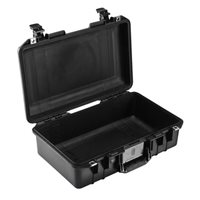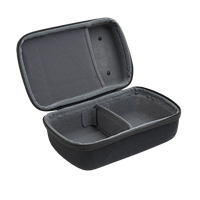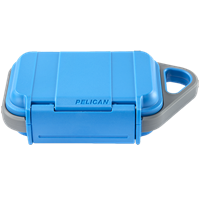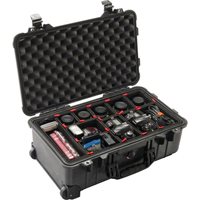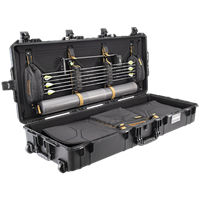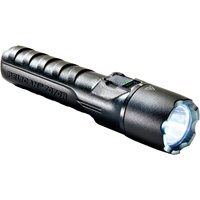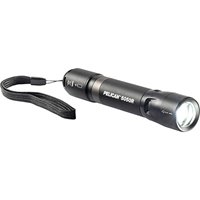
Learning the difference between Pelican cases
With all these different case lines, one question we often get asked is, “What’s the difference between all of them?” In this article, we compare all four case lines to help you understand the difference between all of them and to help you decide which case is right for your needs.
The original Protector Case™; was followed up by the Storm Case™; in 2009, which was inherited with the acquisition of Hardigg Industries. In 2017, Pelican launched a new line of lighter-weight cases to compliment the Protector and Storm case lines, called Pelican AIR™;. Most recently, in 2018 continued expanding its offerings with the more budget-friendly VAULT by Pelican case line.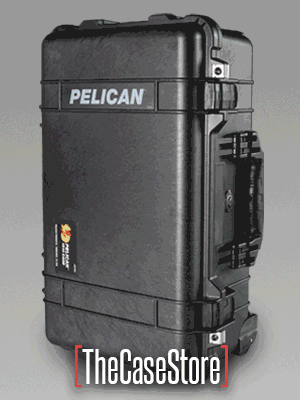
Strength: Which Pelican case is stronger?
Although Protector cases, Air cases, Storm cases and VAULT cases are all very strong, there are subtle differences in each case line. One example to illustrate this has to do with the latches. Simply put for now, the Protector cases have two-step open and close latches, also known as double-throw latches, which creates a stronger seal.
That’s not to say that the seal on Air, Storm and Vault cases isn’t strong; Air cases, Protector cases and Storm cases are all IP67 certified. This means all three are both dustproof and waterproof in depths of up to one meter for longer than 30 minutes. That’s all the waterproof protection you’ll need considering the cases have a very high buoyancy threshold, i.e. they won’t be able to be submerged in water for long without being forced to the surface.
What about the materials used to build the cases? That’s a good question. The Protector case is made with copolymer polypropylene, which is a very strong plastic. Our proprietary polypropylene formula provides the maximum possible strength due to a special foaming process during production. However, this strength comes at the cost of a much heavier case.
The Storm and Air cases are made with HPX and HPX2 resin; a proprietary formula that allows for the plastic to bend, but it will rebound without breaking. These cases are slightly less strong than the Protector at high temperatures but are also lighter.
Finally, the more recent VAULT case line is constructed from a durable polyethylene material. This material is plenty strong for most consumer use applications, however, in more extreme conditions the polypropylene is more stable.
The Air case line (yes, the pun was intended), as mentioned earlier, was designed to be much lighter than the other case lines; up to 40% lighter, in fact. Consequently, one might postulate that the Air case is less protective; however, the Pelican Air’s lighter-weight design does not compromise durability. Consequently, the Protector and Storm lines appear to be much more rigid than the Pelican Air, with all three tested to US/NATO mil-spec standards.
VERDICT
Although each case line is very strong, due to different materials and case designs there are different levels of strength at various temperatures.
Protector: ★★★★★
Storm: ★★★★☆
Air: ★★★★☆
Vault: ★★★☆☆
Latches: Which Pelican latch style is best?

The preference as far as the latches of the different case lines goes is partly a matter of opinion. They both do the same things. However, as mentioned previously, the latches in each case line are different and as a result provide a slightly different level of protection.
The difference between the two-step double-throw latches of the Protector case versus the press and pull latches of the Storm, Air and Vault cases is the closure pressure generated by each latch type. The double-throw latches generate a greater pressure seal than the press and pull latches.
The press and pull latches are often cited as a deciding factor for many a case users. The Storm, Air and Vault cases’ press and pull latches are almost effortless to open and close as opposed to the double-throw latches.
VERDICT
The one thing that latches must do on a protective case is keep the case closed. Thus, impact resistance is of utmost importance in this regard. When cases are dropped from great heights, the impact can send shock waves through the case, which can cause the latches of some cases to pop up.
Pelican cases with the double-throw latches have been dropped from heights of more than 1.8 meters in military tests (DEF-STAN 81-41) and have proven to stay closed. What this results in is very high level of protection; however, this is also at the expense of comfort and convenience; these cases are harder to open and close.
“Press and pull” is a clever latch system that Hardigg Industries developed for the Storm and has been applied to Air and Vault case models because of their popularity among users. It provides enough closure pressure to meet all the important standards such as IP67 and MIL STD 810G (Storm & Air) while also providing ease of use. The result being a much more user-friendly latch system. They are also quieter in operation, which is a very important feature on-set for broadcasting and photography professionals!
Strength
Protector: ★★★★★
Storm: ★★★★☆
Air: ★★★★☆
Vault: ★★★★☆
Comfort
Protector: ★★★☆☆
Storm: ★★★★★
Air: ★★★★★
Vault: ★★★★☆
Weight: Which Pelican case is lightest?

Size and weight has become a particularly important category in recent times with airline carry-on and checked baggage policies that limit that of luggage.
Thus, although the Storm and Vault case is made with a slightly lighter material than the Polypropylene body of the Protector case, the case line that shines above the rest in this category is the Pelican Air line.
As stated previously, the Pelican Air was designed to be lighter than the Protector and Storm case lines. Not only was a newer version of the HPX resin developed (HPX2™), Pelican engineers revolutionized the Protector case by reducing structural material while preserving their legendary standards of strength. The case is designed with honeycomb structural elements that reduce the amount of structural plastic, but are actually stronger than solid polymer material. It is also designed with super-stiff “full-box” sections, which are engineered to create hollow parts, again, reducing structural plastic and thus cutting weight.
Some users might be thinking less weight means less protection. Although the Air case’s HPX2™ resin body makes it lighter and less rigid, it is just as strong as the other two case lines. It’s also helpful to keep in mind that the same lifetime guarantee is universally applied to all the Pelican case lines, which should give you a hint that the same level of protection is provided from one case line to the other.
VERDICT
The material used to construct the cases and the engineering technique is what determines the case weight. The Protector case’s polypropylene shell is much heavier than the HPX resin used to construct the Storm and Air cases. The HPX resin of the Storm case and PE resin of the Vault, makes both about 20% lighter than a Protector case of a similar size, while the Pelican Air’s next generation HPX resin (HPX2™) makes the case up to a whopping 40% lighter.
Protector: ★★★☆☆
Storm: ★★★★☆
Air: ★★★★★
Vault: ★★★★☆
Mobility: Which Pelican case is best for traveling and transportation?
The ability to move Pelican cases around with ease is one of the most important characteristics of the cases. If it wasn’t mobile, it wouldn’t be of much use. Thus, many of the Protector, Storm, Air and Vault case models come with both wheels and a retractable extension trolley handle to allow you to pull the case as it rolls along the ground. This makes it ideal for travelling, and for transportation.
The retractable handle is largely the same in every case line as are the wheels. However, it must be noted that the Protector case line includes several Mobility cases, which utilize much larger, stronger wheels, suitable for rough terrain.
Although all the four case lines have a model that is designed to be a carry-on case for air travel, the Pelican Air’s lightweight design makes it perfect for air travel as you will not have to worry (too much) about the weight restrictions of an airline’s checked baggage policy. And if you’re the type that doesn’t trust the airline to not lose your checked baggage, the Pelican Air is ideal for carrying on because it’s simply easier to move around since it weighs significantly less.
VERDICT
With all of that said, the Pelican Protector and Air cases are quite similar in this category. The Protector comes out on top with the Mobility cases, but the Pelican Air’s lightweight design is also a plus. The Storm case’s HPX resin shell is also lighter than the Protector’s polypropylene exterior.
Protector: ★★★★★
Storm: ★★★★☆
Air: ★★★★☆
Vault: ★★★☆☆
Aesthetics: Which Pelican case looks better?
Aesthetics is largely a matter of opinion. Having said that, the difference between the cases in terms of aesthetics is minimal. Nevertheless, we’ll cover the basic differences briefly.
The latches and handle of the Storm and Vault ranges are always black, as opposed to the Protector and Air ranges, which match the color of the case with the latches and handles. The distinctive ribs molded to the exterior of the Pelican Protector, Air and Vault cases are recessed on the Storm cases. Aside from those subtle differences, the cases are very similar aesthetically. The Air case, however, does boast a slight stylistic difference with the “conic curve” lid design, which does give it a distinctly sleeker look than the Protector and Storm cases.
One thing to keep in mind is that the material used to make the different case lines will make a difference after a period of use. The Protector’s polypropylene shell is more rigid than the HPX Resin bodies of both the Storm and Air cases, therefore, the two latter case lines are more prone to scuffs and scratches. This by no means will result in a loss of their protective properties, but it could sway one’s consideration on aesthetics.
Again, the difference comes down to personal taste. As was stated previously, the lifetime warranty applies to Protector, Air and Vault cases, so the style of case you prefer is up to you and the level of protection will be largely the same.
VERDICT
As the saying goes, beauty is in the eye of the beholder, but if it were up to the writer of this article, the aesthetics debate goes to the Storm case.
Protector: ★★★☆☆
Storm: ★★★★★
Air: ★★★★☆
Vault: ★★★☆☆
Price: Which Pelican case is the cheapest?
Lastly, we come to price. As Jerry Maguire once said, “Show me the money!” In other words, which one of these cases is going to save you the most money? This is likely to be the deciding factor for a lot of prospective buyers out there and there are differences in price between the four case lines, and for the most part they are minimal. Due to the demand of the newly launched Air cases and the revolutionary HPX2™ resin engineering, the Air case is slightly more expensive than the rest. The Vault case line was designed with the price-conscious consumer in mind, and shines in this category. Manufactured in Mexico using a more common polymer, the Vault case line offers affordable protection to the masses who do not require the extreme performance offered by the other 3 “flagship” lines.
The most important thing to remember here is a Pelican case, whether it be Protector, Storm, Air or Vault, is a high-quality product backed by years of knowhow as a pioneer in the industry. The prices can sometimes seem a bit steep, but Pelican cases are a lifetime investment. They’re engineered for life.
Protector: ★★★★☆
Storm: ★★★★☆
Air: ★★★★☆
Vault: ★★★★★
Summary: Which Pelican case is the best?
|
|
||||
|
Strength |
5 |
4 |
4 |
3 |
|
Latches (Strength) |
5 |
4 |
4 |
4 |
|
Latches (Comfort) |
3 |
5 |
5 |
5 |
|
Weight |
3 |
4 |
5 |
4 |
|
Accessories |
5 |
3 |
3 |
2 |
|
Mobility |
5 |
4 |
4 |
3 |
|
Aesthetics |
3 |
5 |
4 |
3 |
|
Price |
5 |
5 |
5 |
5 |
|
Total |
34 |
34 |
34 |
29 |
Looking at the table above, we can see that it’s a tie between all three case lines. At the end of the day, the difference and the preference will largely be determined by the user and the user’s needs. The most important thing to remember is that most of what was listed above is secondary to the most important aspect of Pelican cases, the protection. Every case line protects what’s inside just as well as the next, so whatever your decision, you can be safe in the knowledge that whatever you put in in your Pelican case, it will be protected.
We also have a variety of accessories for every case need, including the awesome MOLLE Panel Kits that easily attach to the lid of your 1500, 1510, 1535, 1560, 1610, 1620, or 1650 Protector case!
If you’d like to discuss what case is ideal for your needs and speak to a representative, Call us toll free at 1-888-489-1766, and we’d be happy to accommodate you!
For more posts like these, check out the rest of our information center articles!
-

Not Your Average Luggage
Pelican™ AIR Travel Cases are waterproof, crushproof and adventure-proof. Our durable wheeled suitcases are engineered to withstand the wear-and-tear of frequent travel or outdoor excursions.
Shop Now -

Ultimate Protection with VAULT by Pelican™
With heavy-duty hinges, nail-tough hasps and an extremely tough high-impact polymer shell, it withstands whatever comes with the territory ahead.
Shop Now -

Professional Tool Cases
Protect and organize the tools of your trade with a Pelican™ tool case equipped with drawers, cutouts for tools and hardware and an impact-resistant outer shell.
SHOP 0450

